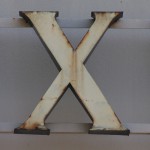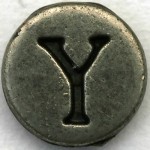U stands for Unsecured debt in my Bankruptcy Alphabet. Unsecured describes a bankruptcy creditor who has no collateral to secure his debt.
The world is full of pivotal distinctions: male/female; apples/oranges; cold/hot. The distinction between unsecured debt and secured debt is huge in bankruptcy.
A secured creditor has a lien on the debtor’s assets. That lien is an interest in property: it isn’t ownership, but it gives certain rights to the lien holder. Anglo Saxon law has accorded special deference to property holders for as far back as we can trace the beginnings of our law.
At the conclusion of a Chapter 7 bankruptcy case, a lien continues to exist on the assets to which it attached. In contrast, the claim of most unsecured creditors is extinguished, erased, discharged. The unsecured creditor, who has no lien to support his claim, is toast. (That’s another T word in my bankruptcy alphabet. <g>)
Credit cards are the most typical unsecured debts in a bankruptcy case. When you use most bank credit cards, you get absolute ownership of the goods you buy with the card. The seller retains no interest in the goods, nor does the credit card issuer who makes the money available to pay the seller get a lien on the goods. They belong outright to the buyer. The credit card issuer is then at risk should you not pay, because its claim is unsecured.
The division between secured and unsecured gets another level of importance in Chapter 13. Eligibility to file Chapter 13 is pegged to having unsecured debts below $360,475. An added twist in Chapter 13 is that creditors who have a lien but the lien doesn’t attach to any asset with value available to support the claim, is counted among the unsecureds.
Powerfully, Chapter 13 allows a debtor to void liens that are underwater, that is, that don’t attached to value in the collateral.
This post has been brought to you, as they say on Sesame Street, by the letter U.
U can also stand for Underwater, and United States Trustee
Image courtesy of Leo Reynolds







[…] beginning a new series of posts—a series that many other bankruptcy lawyers have started—called the Bankruptcy Alphabet. Of course, there’s no better place to […]